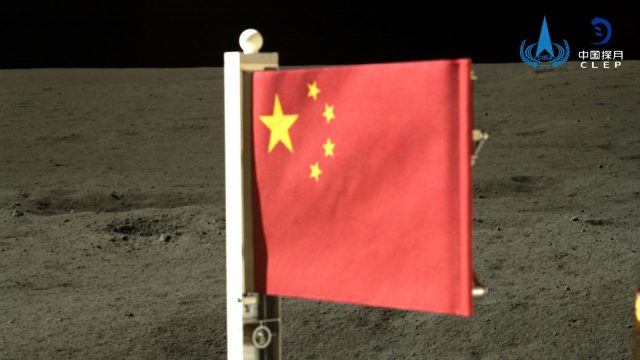China’s lunar probe has returned to Earth, making the country the first to bring back samples from the moon’s far side.
The re-entry capsule of the Chang’e probe touched down in the northern Chinese region of Inner Mongolia at about 2pm Beijing time (7am UK time), carrying lunar soil collected earlier in June.
At the start of the month, the probe had successfully landed at the moon’s South Pole, in the Aitken Basin, a gigantic impact crater that always faces away from Earth.
Chinese scientists anticipate the returned samples will include 2.5-million-year-old volcanic rock and other material that they hope will answer questions about geographic differences on the moon’s two sides.
The moon’s near side – which always faces the Earth – is flatter and has fewer impact craters. The far side always faces outer space.
The samples will be transferred by air to Beijing, state media outlet CCTV reported, and analysed by both Chinese and foreign scientists.
Chinese President Xi Jinping said the mission’s completion was a “landmark achievement” in China’s quest to become a space and scientific powerhouse.
Read more:
Why the moon’s south pole is the chequered flag of space race 2.0
Moon to get its own time zone created by NASA
Missions to the moon’s far side are more difficult because a relay satellite is required to maintain communications.
The probe left earth on 3 May to collect samples which are expected to answer “one of the most fundamental scientific questions in lunar science research,” Zongyu Yue, a geologist at the Chinese Academy of Sciences, said.
“What geologic activity is responsible for the differences between the two sides?”
China’s Xinhua News Agency previously said the Aitken Basin – an impact crater eight miles deep and 1,500 miles wide – is thought to have been created more than four billion years ago.
It is the oldest and largest such crater on the moon, so could provide significant information because the original impact may have ejected materials from deep below its surface.
The mission comes amid a growing space rivalry among countries including China, India, Japan and the US.
Beijing aims to put a person on the moon by 2030, while US agency NASA hopes to achieve the feat again in September 2026.



















